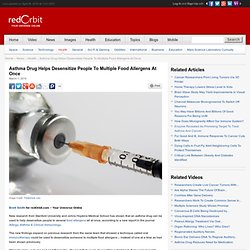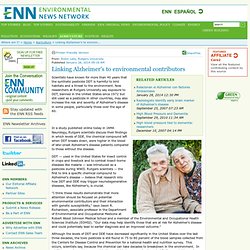

The Happiness Blanket - British Airways. Mink 3D prints makeup. The slow death of purposeless walking. Image copyright AP.

When the French clock off at 6pm, they really mean it. Relaxing in a French cafe, untroubled by work emails.

Photograph: Sipa Press/Rex Features. Laser Light Opens Nanoparticles to Release Chemo Drugs Right to Tumors. 19inShare Chemotherapy is an effective therapy for cancer, except for the side effect of killing the rest of the body with the toxin.

Being able to deliver chemo drugs directly to the tumor while sparing the body’s healthy tissues may allow higher doses of the drug to attack cancer without killing the patient. Microneedle Patches Allow for Self Administering of Flu Vaccine. 14inShare Annual flu vaccinations have become a regular chore for a lot of people, while the fear of needles has kept quite a few people away.

An easier way of getting vaccinated would help get more people to participate. Researchers at Georgia Tech, Emory University, and the Centers for Disease Control and Prevention, have tested a new patch that allows just about anyone to deliver a flu vaccine in the privacy of their home. The microneedle array consists of 50 tiny needles that inject the vaccine into skin where the immune reaction begins. The team compared self administration to a professional applying the patch, and also against traditional syringe delivery. Food Allergy Oral Immunotherapy More Effective When Paired With Asthma Drug Omalizumab - Health News. March 1, 2014 Brett Smith for redOrbit.com – Your Universe Online New research from Stanford University and Johns Hopkins Medical School has shown that an asthma drug can be used to help desensitize people to several food allergens all at once, according to a new report in the journal Allergy, Asthma & Clinical Immunology.

Google Glass Could Be A Benefit To Patients In Remote Regions Of The World - Health News. February 28, 2014 redOrbit Staff & Wire Reports – Your Universe Online.

Global Health and Wellness News: Greener chemical cleanups. Cleaning up oil spills and metal contaminants in a low-impact, sustainable and inexpensive manner remains a challenge for companies and governments globally.

Linking Alzheimer's to environmental contributors. Scientists have known for more than 40 years that the synthetic pesticide DDT is harmful to bird habitats and a threat to the environment.

Now researchers at Rutgers University say exposure to DDT, banned in the United States since 1972 but still used as a pesticide in other countries, may also increase the risk and severity of Alzheimer's disease in some people, particularly those over the age of 60. In a study published online today in JAMA Neurology, Rutgers scientists discuss their findings in which levels of DDE, the chemical compound left when DDT breaks down, were higher in the blood of late-onset Alzheimer's disease patients compared to those without the disease. DDT — used in the United States for insect control in crops and livestock and to combat insect-borne diseases like malaria — was introduced as a pesticide during WWII. Read more at Rutgers University. Elderly couple image via Shutterstock. Photosynthesis bike could be a breath of fresh air for cyclists. New trends may transform how we eat and drink. The future of food is upon us.

Well, according to innovation, research and advisory firm Stylus it is. They have predicted these new developments in the food market: Food trends in 2014: from digital dining to healthy junk food. It is a blustery winter morning in Mayfair, London, and 100 or so well-heeled representatives from the advertising and retail worlds are huddled in a lecture theatre at the Royal Institution.

This is the future of food, according to Stylus, an "innovation, research and advisory firm" that scours global markets to pinpoint the most influential emerging trends for companies such as Saatchi & Saatchi, Bacardi and Hotel Chocolat. Digital dining Edible QR code at Harney Sushi. Edible QR codesHarney Sushi, a restaurant in San Diego, has attempted to tackle the problem that 52% of Californian seafood is supposedly being mislabelled, by devising edible rice paper QR codes.
Using smartphones, diners can call up detailed information about the provenance and global stocks of the fish they've ordered. Interactive cocktail loungesLogbar in Tokyo issues customers with iPad Minis upon entry. Electrolux Design Lab's holographic chef. Chemists use newt toxin to 'see' pain in a living animal. By studying newts, scientists have found a way to tag and take images of the location where pain is generated in living rats. The work began in the 1960s, when Stanford University scientists discovered that the native newts had a chemical in their skin and eggs identical to the potent toxin found in pufferfish.
The newts are only toxic if eaten. The late chemist Harry Mosher spent much of his career analyzing and attempting to synthesize this toxin and related molecules, collectively called guanidinium toxins. They turned out to be an interesting group of molecules for chemists who like to develop new ways of stitching atoms together to form molecules. One such chemist, Justin Du Bois, a professor at Stanford, started a lab focused on making and modifying the structures of the guanidinium toxins. Block pain neurons. A 18F-Labeled Saxitoxin Derivative for in Vivo PET-MR Imaging of Voltage-Gated Sodium Channel Expression Following Nerve Injury - Journal of the American Chemical Society. Aileen Hoehne †, Deepak Behera †, William H. Parsons ‡, Michelle L. James †, Bin Shen †, Preeti Borgohain †, Deepika Bodapati †, Archana Prabhakar †, Sanjiv S. Gambhir †, David C. Yeomans §, Sandip Biswal *†, Frederick T.
Chin *†, and J. †Department of Radiology, ‡Department of Chemistry, and §Department of Anesthesia, Stanford University, Stanford, California 94305, United States J. DOI: 10.1021/ja408300e Publication Date (Web): November 21, 2013 Copyright © 2013 American Chemical Society Section: Dishes that do themselves. You’ve just enjoyed a great meal, with fine wine and good company, but now it’s time to slave your way through the mountain of greasy plates and stained glasses. Sound familiar? Fortunately, a new invention from Swedish design studio Tomorrow Machine may well bring an end to this most hated of all nightly rituals. Their self-cleaning dishes are coated in a substance which mimics a lotus leaf, allowing food, dirt and oil to simply run off, leaving nothing behind. Although such superhydrophobic substances are nothing new (see the briefing in Green Futures about the use of similar materials on aeroplane wings, etc.) it is the first that is safe enough to be used with food.
'Sugar is the new tobacco': Cuts to amounts hidden in food could halt obesity epidemic, claim doctors - Health News - Health & Families. Sugar is a major cause of obesity and also increases the risk of type 2 diabetes. Leading experts today launched a new campaign group, Action on Sugar, to alert the public to the high levels of sugar in their food and lobby the government and the food industry to reduce its use of “unnecessary” sugar. The group, which brings together doctors from the UK, the US and Canada, aims to emulate the reduction in salt levels in our diet. Intake of salt dropped by 15 per cent between 2001 and 2011, leading to a minimum of 6,000 fewer strokes and heart attack deaths per year, saving £1.5bn. Experts said that if major manufacturers reduced the amount of sugar in their products, adding up to a 20 to 30 per cent decrease in sugar content in three to five years, the obesity epidemic could be stopped in its tracks. Children were particularly at risk from high sugar foods and soft drinks, said Simon Capewell, Professor of Clinical Epidemiology at the University of Liverpool.
Loading gallery. Valproate reopens critical-period learning of absolute pitch.